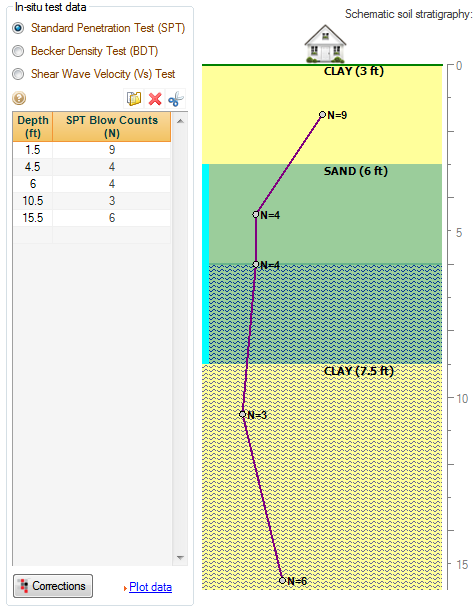NovoLIQ calculates depth interval dz during calculation of post-liquefaction displacements.
In general dz = zb - zt where zt and zb are the depth to the top and bottom of the depth interval, between the test depth and the previous / next test depths. The following explains how dz is calculated for each case:
- If a test is above the water level, dz = 0.
- In general, the depth interval for tests within the same layer is calculated by calculating the average depth between the depths of two subsequent tests. For example for N=3 at z=10.5 ft, zb= (10.5+15.5)/2=13 ft. However, zt for this test is the top of this layer which is 9 ft.
- If the test is the first test in a layer, zt is equal to top of the layer. For example for N=9 at z=1.5 ft, zt would be zero. For N=3 at 10.5 ft, zt is 9 ft.
- If the test is the last test in a layer, zb is equal to bottom of the layer. For example for N=6 at z=15.5 ft, zb would be 16 ft.
- If water level is present within a layer, zt for tests within that layer will depend on depth of water level. For example for N=4 at z=6 ft, zt=6 ft and zb=9 ft.
- For first test below the ground water level, Zt will be water level.
- If a test depth is exactly on the interface between to layers (e.g. N=4 at 6 ft), then the test is considered to be the first test in the lower layer.
- If there is no field test in a layer, no dz will be considered for that layer (remember dz is calculated at each test depth).
Note: dz, Zt and Zb are presented on the 'Post-Liquefaction Parameters' tab in the output tables.

|
